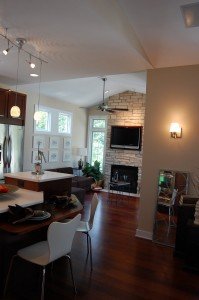Most houses are built for people who are healthy, people with good vision, great hearing and four working limbs. But how many of us in the course of our lives experience some sort of physical problem – a broken leg, bad eyesight or worse? A new trend in home building is addressing these issues, working to create homes that serve a greater number of people for a longer period of time. Architects have labeled this sort of planning Universal Design.

Newport Cove recently opened a home that is an example of Universal Design. The Newport Cove LIFEhouse offers a number of features which make a house more livable, yet do not detract from a pleasant, homelike environment. The LIFEhouse is a collaboration between custom builder New American Homes and the Center for Inclusive Design and Environmental Access (IDeA Center), University at Buffalo – State University of New York.
When people think of living in “accessible” housing, images of wheelchairs and false limbs come to mind. But many of us suffer from physical impairments that are not as obvious. According to research that went into the Americans with Disabilities Act, several of the most common impairments are things that affect everyday life, even though they have little to no outward signs. Here are a few examples:- Bad vision, 2.8 percent of all ADA claims: At times this can mean nothing more than slightly blurry vision that’s easily corrected with glasses or contacts. But it can also mean poor peripheral vision, or a limited ability to see anything that’s dimly lit.
